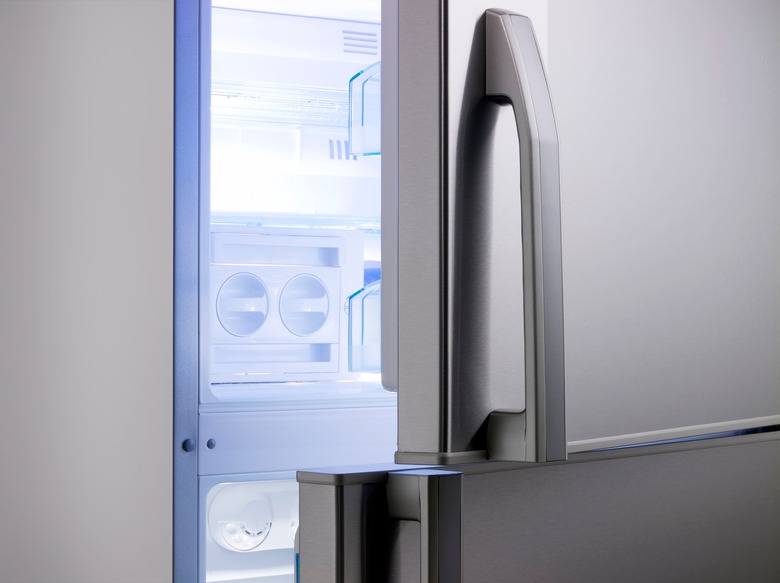What Are Normal Refrigerator And Freezer Temps?
You may not think about the temperature when your refrigerator and freezer work properly, but the settings chosen for each compartment have a major impact on food safety. Many fridge and freezer units don't have actual temperatures listed on the dial, so a thermometer suitable for each area helps you make sure your dialed-in selections are ideal for cold food storage.
Ideal Refrigerator and Freezer Temperatures
Ideal Refrigerator and Freezer Temperatures
The optimal temperature range for the refrigerator is 34 to 40 degrees Fahrenheit to keep food safe yet unfrozen. If your thermometer reading is outside of this range, adjust the temperature settings to make it either warmer or colder, depending on the current temperature. The dial indicators mean different things on different models; for instance, "10" may be the warmest setting, or it could mean the coolest. Consult your owner's manual to be sure you're adjusting the setting in the right direction.
The perfect temperature range for a freezer is at or slightly below 0 F, and never more than 2 F. Adjust the freezer settings as necessary to get the temperature in a safe range. After making adjustments to either the freezer or refrigerator, check the thermometer's temperature readout after five hours, repeating the adjustment process until the reading is in the ideal range.
Appliance Thermometer Information
Appliance Thermometer Information
A refrigerator/freezer thermometer helps you accurately determine the current temperature range in both your fridge and freezer. These thermometers are designed to handle the extreme cold. Don't use a regular outdoor thermometer or oral thermometer, because they may not provide accurate readings.
Keep one of these thermometers inside both sections to have refrigerator and freezer temperatures available at all times. This way, you'll have a good idea whether chilled and frozen items are still safe to eat during or after a power outage. Some of these thermometers have a curved hanger at the top so you can hang them from a refrigerator rack. Keep the thermometer near the center of either the fridge or freezer for long-term readouts.
Take the Refrigerator's Temperature
Take the Refrigerator's Temperature
Place the refrigerator thermometer in a glass of room-temperature water, and then set the glass near the middle of the refrigerator. Don't put it near the door, or near walls where it may be exposed to heat from a light bulb, fan or motor. After five to eight hours, check the thermometer to get an accurate temperature reading.
Measuring the Freezer's Frigid Temperature
Measuring the Freezer's Frigid Temperature
Sandwich the refrigerator/freezer thermometer between frozen food items somewhere near the middle of the freezer for an accurate reading. Wait five to eight hours, and then check the thermometer readout.
Normal Cooling
Normal Cooling
Your refrigerator stays cool thanks to the evaporator fan, which pulls the cold freezer air into the evaporator and into the fridge compartment. If your normal refrigerator temp starts to climb, it could be that your freezer is jam packed with frozen foods, which can interfere with that airflow.
Which is the coldest part of a refrigerator? It's usually the area closest to the freezer section and the backs of the shelves. Since cold air sinks, lower portions of the fridge also tend to be colder. The door and any areas near the door, motor or light bulbs tend to be warmer because of the warm air from those sources.
Like the refrigerator, the freezer tends to be warmer near the door. The center of the freezer at the back is typically the coldest spot, so keep foods you want to keep frozen solid there. Frequent door opening can raise the temperature at the front of the freezer.
Outage and Warm Air Issues
Outage and Warm Air Issues
During a power outage, food that stays at or below 40 F is still safe to use. Keep the refrigerator and freezer doors closed to help keep the cool air inside the compartments. After grocery shopping or returning from a restaurant with leftovers, place the items that require refrigeration or freezing in the refrigerator or freezer within two hours or one hour or less if the temperature outside is 90 F or greater. Keep in mind that your car may be even hotter than the air temperature, so put those foods away as quickly as possible during hot weather.
